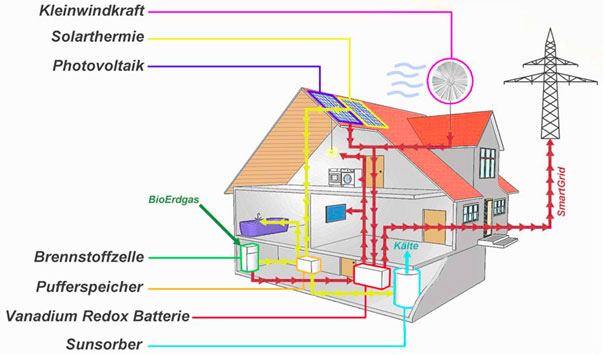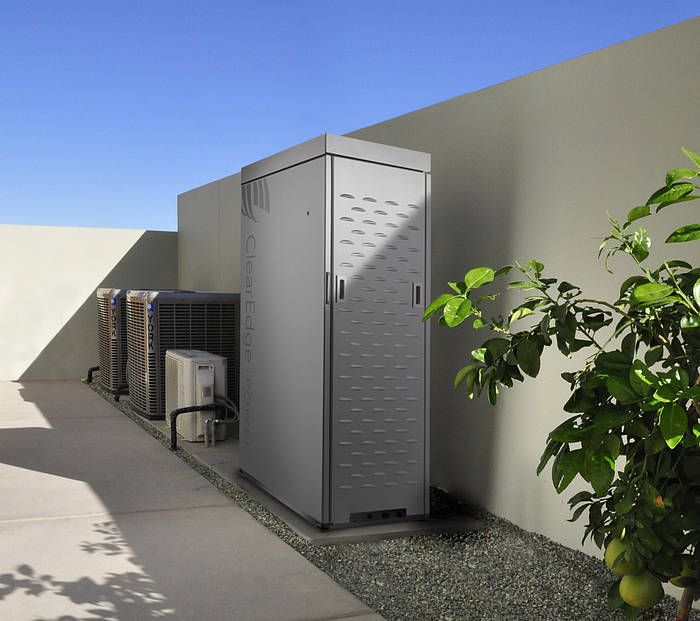The fuel cell, which is about the size of a refrigerator, provides 5 KWh of electricity and 6 KWh of heat. Coupled with the vanadium redox accumulator, it functions as a “home power station”. One of the major advantages of the fuel cell is that it can supply energy around the clock and thus also cover the so-called basic load, ie the permanently required power. It can also be coupled with other energy generators such as solar or photovoltaic plants. Excesses are stored in the vanadium redox battery and can be fed into the power grid.

Especially for operators of cooling chains, alarm systems, hotels, the failure safety of the fuel cell and the independence from the local power supply is interesting. This eliminates the risk of consequential damage caused by power failures. Since the fuel cell is always ready for use, it can also switch to “emergency power mode” and thus replace an emergency power generator.

Since the fuel cell is always ready for use, it can also switch to “emergency power mode” and thus replace an emergency power generator.
In the coming years, the fuel cell is to be introduced into Austrian households. GRE plans the construction of 8.5-megawatts of fuel cells in Austria as well as 50 megawatts by 2020. In addition, the company is focusing on CO2-neutral solutions for vehicles, industry and municipalities. The company is located in Güssing, Burgenland, the first municipality in the EU to cover its energy supply mainly from renewable resources.
Further Information: LINK






